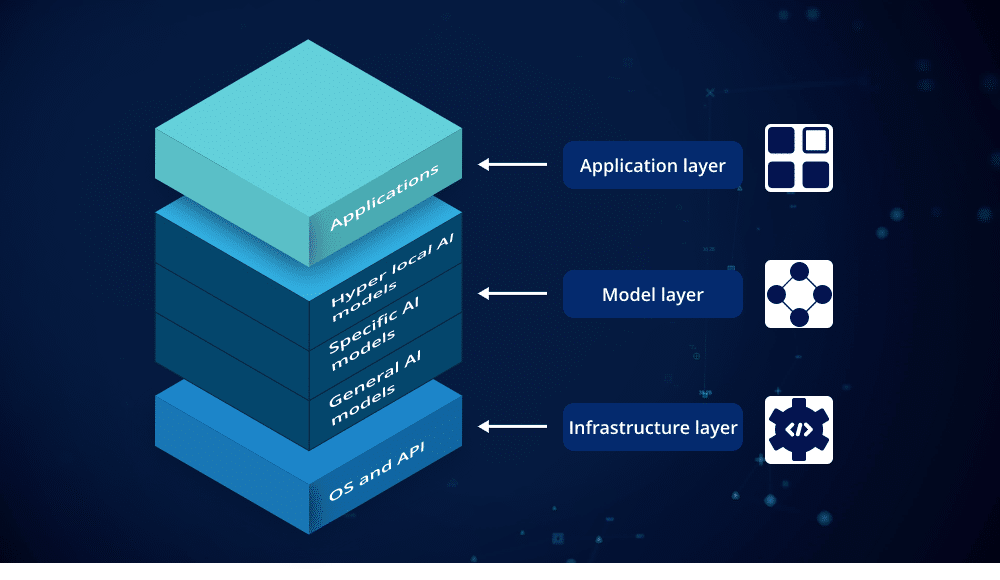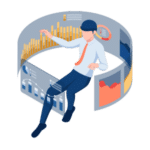
MatrixAI: AI-Powered SEO
Welcome to MatrixAI – Predictive SEO Analysis
Revolutionize Your Online Presence with AI SEO
Digital marketing is a constantly evolving environment, and one must constantly innovate to stay ahead of the game.
MatrixLabs takes pride in offering a distinctive set of AI SEO Tools and the SEO automation platform powered by AI in digital marketing that sets the pace in 7 key industries.
By leveraging cutting-edge artificial intelligence, MatrixAI, an AI digital company product, is revolutionizing how businesses achieve search engine optimization.

Data-driven SEO
Search Engine Optimization (SEO) is a well-established strategy to enhance a website’s visibility on search engines.
The traditional SEO approach is time-consuming, requiring constant monitoring and manual adjustments to align with ever-changing algorithms. Artificial Intelligence in SEO and AI-powered SEO is the game-changer.
It integrates artificial intelligence into SEO, automating and optimizing websites and content for search engines. It learns from data, discerns patterns, and makes decisions based on this knowledge.
AI-powered SEO is reactive and predictive, anticipating algorithm updates, user behavior, and industry trends.
The MatrixAI Advantage
MatrixAI is a leading AI marketing platform incorporating AI-powered SEO, transforming how businesses optimize their online presence.
Our SEO platform offers several benefits:
- Enhanced Predictive Analysis: With Machine Learning SEO, MatrixAI can predict future trends and patterns in user behavior. This allows businesses to stay ahead of the curve.
- Real-Time SEO Adjustments: MatrixAI monitors and adjusts your SEO strategies in real-time, ensuring optimal website visibility and performance.
- Personalization: MatrixAI tailors SEO strategies to your specific needs. Through data analysis, it delivers personalized content recommendations to attract and retain your target audience.
- Streamlined Decision Making: By offering detailed, data-driven insights, MatrixAI facilitates informed decision-making, empowering businesses to maximize ROI from their SEO efforts.


Why Choose Our AI Digital Marketing Services?
Our AI-powered marketing strategies are designed to optimize your online presence, drive higher website traffic, increase conversions, and generate lasting customer engagement.
Cutting-Edge AI SEO Services
Our AI SEO services will propel your website to the top of search engine results. Using advanced AI technology, we automate the process of keyword research, content optimization, and backlink creation.
Our SEO strategies are designed to adapt to the latest algorithm changes, ensuring your website’s ongoing visibility and high ranking on all major search engines.
Personalized Marketing with AI
Our AI services harness the power of machine learning to deliver personalized marketing campaigns. We analyze user behavior, interests, and preferences to tailor your marketing content, offering a unique and engaging user experience that significantly boosts conversion rates.
Predictive Analytics for Proactive Marketing
Stay a step ahead with our AI-driven predictive analytics. Our tools analyze vast datasets swiftly and accurately, anticipating market trends and consumer behavior. Make data-driven decisions and refine your marketing strategies with precision.


Automated Social Media Management
Maximize your social media impact with our AI-driven social media management. Our services analyze trends, automate posts, and engage with followers, allowing you to build a strong online community without the hassle of manual management.
Efficient, Effective, and Future-Proof
Integrating AI into your digital marketing strategy means you’re not just improving efficiency but future-proofing your online presence. As technology and consumer behavior evolve, our AI-driven services adapt and improve, ensuring you’re always at the forefront of the digital landscape.
Transform Your Digital Strategy Today
Ready to redefine your digital marketing? Embrace the future with our AI Digital Marketing Services. Stand out in the digital crowd, outpace your competition, and drive your business success to new heights.
Choose AI. Choose growth. Choose success.
Upgrade your digital marketing strategy with our AI Digital Marketing Services. Contact us today to learn more.

4-Step Process to Get Started with AI Digital Marketing Services from Matrix Marketing Group
Revolutionize Your Online Presence with AI
Harness the power of artificial intelligence to supercharge your marketing efforts with our premier AI Digital Marketing Services. Steps involved when starting AI-based marketing initiatives with the top AI digital marketing agency.
01
Initial Consultation
We strive to comprehend your business needs, goals, and obstacles better. During this consultation, we’ll delve into how AI can benefit areas such as customer segmentation, personalization, forecasting, and marketing automation, to name a few.
02
Data Analysis and Strategy Planning
We begin our research and data analysis upon identifying your goals by scrutinizing your current consumer data, web analytics, and sales figures. Armed with this essential knowledge, we devise a strategically potent plan for incorporating AI into your marketing campaigns.
03
Implementation
On strategy sign-off, the next step is implementation. Typically, implementation projects include digital marketing services, AI for marketing automation, predictive analytics, personalization, human capital, or any other areas outlined in the strategy.
04
Monitoring and Optimization
Once the AI-driven digital marketing platform is in place, the foundational and lead-generation campaign can be generated in hours rather than weeks or months.
AI SEO Enabled a 437% Increase in Website Traffic for an AI Technology Startup.
Our client, a burgeoning AI technology startup with a compact website of 25 pages, needed help to impact the crowded digital landscape. Despite having innovative solutions, their website traffic could have been more minimal, resulting in low awareness and reach for their offerings.

The Challenge
As a startup, they needed more resources and expertise to implement a robust SEO strategy effectively.
Raising online visibility and driving organic traffic to a website is always challenging, especially when contending with established giants in the AI technology sphere. This was the challenge, but possible.
The MatrixAI AI SEO Solution
The startup decided to implement MatrixAI, our AI-powered SEO platform. MatrixAI automated and optimized the SEO process, utilizing machine learning to predict user behavior trends and adapt to real-time search engine algorithm changes. However, only that matters when you understand your target audience.


The MatrixAI AI SEO Solution
The startup decided to implement MatrixAI, our AI-powered SEO platform. MatrixAI automated and optimized the SEO process, utilizing machine learning to predict user behavior trends and adapt to real-time search engine algorithm changes. However, only that matters when understanding your target audience.

The Outcome
Within just three months of deploying MatrixAI, the startup witnessed a staggering increase in website traffic.
Key metrics include:
- Website Traffic: The startup saw a 437% increase in website traffic, significantly improving its online visibility.
- Organic Traffic: Implementing MatrixAI led to a 400% increase in organic traffic, a key indicator of the success of the AI-powered SEO strategy.
- Bounce Rate: The website’s bounce rate decreased by 35%, suggesting that visitors found the content more relevant and engaging.
- Page Ranking: There was a noticeable improvement in the average page ranking for their selected keywords, with most keywords ranking on the first page of search engine results.

AI SEO – MatrixAI Powered
This case study highlights the revolutionary capabilities of MatrixAI’s AI-powered SEO platform for startups.
Despite entering a fiercely competitive arena, the technology startup drastically improved online visibility, driving organic traffic and boosting user engagement on its website.
The investment in MatrixAI generated an impressive ROI quickly, charting a trajectory for continued digital success.
Boost Sales with Agent as a Services
Unlock unparalleled revenue growth with Boost Sales – where advanced technology meets expert human touch. Our Agent as a Service seamlessly integrates data-driven insights with a dedicated team of sales professionals, providing a scalable, on-demand solution that accelerates lead engagement, nurtures prospects, and closes deals faster.
Revolutionize Your Business Growth with Our Advanced AI Digital Marketing Solutions
A budget of $10,000 per month for AI-driven digital marketing can help a business with $20M in revenue to reach new audiences, drive conversions, and gain actionable insights for strategic decision-making.
The best way to spend this budget depends on various factors such as business goals, target audience, industry, and the current marketing setup.
A typical AI-driven marketing program by Matrix Marketing Group and MatrixAI:
- AI-Driven PPC and Social Media Advertising: With AI-powered tools for real-time ad optimization. MatrixAI can help in bidding strategies, audience segmentation, ad creative testing, and retargeting to ensure your paid advertising campaigns yield maximum returns.
- Programmatic Advertising: Our AI platform automates ad buying to target the right audience at the right time and on the right platform, improving the efficiency and results of your ad campaigns.
- AI-Powered SEO: Super cool innovations with MatrixAI and its ability to analyze vast data to provide website and content optimization insights. This gets you ranked higher in search engines, improving organic reach.
- Chatbots and Virtual Assistants: Implement AI-powered chatbots on your website or messaging apps to automate customer service and lead generation. The virtual assistant can answer common customer queries, guide them through product selections, and assist with bookings or purchases.
- Predictive Analytics: Investing in our AI solutions gives you predictive insights based on your industry data trends. Helping you anticipate customer behavior and preferences, adjust your marketing strategies accordingly, and optimize your budget allocation for maximum ROI. What if you could do this at scale?
- Personalized Email Marketing: MatrixAI analyzes user behavior to create personalized email campaigns that drive higher open rates and conversions.
- Email Marketing Automation: Email marketing is still one of the most effective digital marketing channels. We use MatrixAI to segment your audience, personalize content, optimize send times, and analyze the results of your email campaigns.
- AI-Driven Content Marketing: Content creation and distribution are optimized using AI. We use AI and humans to identify trending topics, create content outlines, personalize content for user segments, and recommend optimal posting times for maximum engagement. Don’t fire your writers yet!
- Conversion Rate Optimization (CRO): MatrixAI improves the user experience on your website or app, increasing the rate at which visitors become customers. This might involve A/B testing of different site elements, personalizing content for individual users, and improving site navigation, and it works.
- Voice and Visual Search: As more consumers use voice assistants and visual search, optimize your online presence for these search methods. MatrixAI assists in making your content more accessible and understandable to these technologies.
Remember to measure the performance of these strategies regularly and adjust as needed based on the data. With the right approach and the power of AI, your $10,000 monthly budget can drive significant growth for your business.
Let’s see what your ROI would be.
General FAQs
What AI Digital Marketing Services are offered by Matrix Marketing Group?

Matrix Marketing Group provides cutting-edge AI Digital Marketing Services to enhance your online presence. AI-powered services include SEO optimization, personalized marketing strategies, predictive analytics, and automated social media management. We aim to attract more customers to your website, engage them, and drive traffic.
How does AI improve SEO strategies and tactics?

Matrix Marketing Group employs cutting-edge AI technology to automate keyword research, content optimization, and backlink creation, ensuring clients always keep pace with search engine algorithm changes. This AI-driven approach guarantees high ranking and visibility of client websites.
What is personalized marketing in AI Digital Marketing Services?

Personalized marketing involves using AI to deliver tailored marketing content to individual users. Matrix Marketing Group’s AI tools analyze user behavior, interests, and preferences, allowing for the creation of highly personalized and effective marketing campaigns that significantly increase conversion rates.
How does Matrix Marketing Group use AI in predictive analytics?

Predictive analytics is a powerful tool that leverages statistical algorithms, machine learning, and historical data to forecast future outcomes. Matrix Marketing Group utilizes advanced AI-driven predictive analytics to swiftly and accurately analyze vast datasets, providing invaluable insights into market trends and consumer behavior. With this knowledge, businesses can make data-driven decisions and precisely refine their marketing strategies for optimal success.

